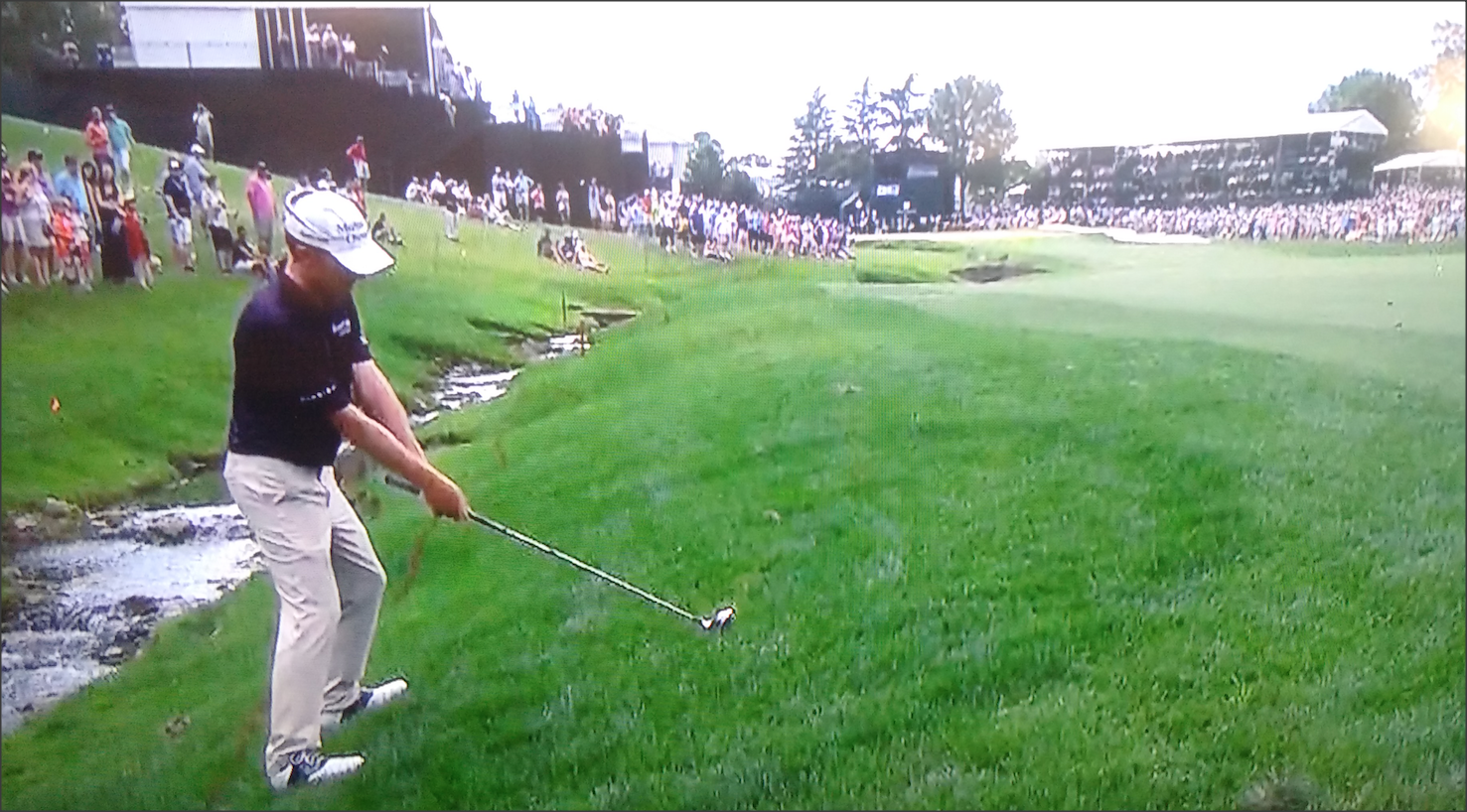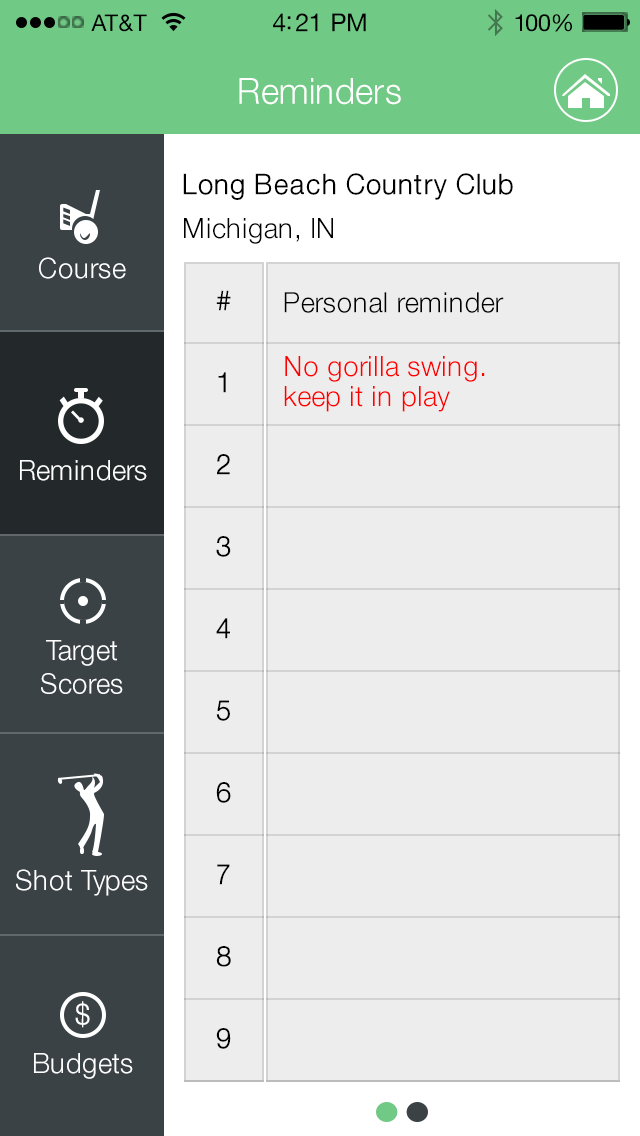Today was uneventful at the Player’s Championship, congratulations Jason!
Last Sunday at the Wells Fargo Championship, Roberto had a decision to make. Sudden death, tee shot in the hazard, drop on a big side-hill in the rough at 225 yards from the green. He and his caddie decided fairway wood. He shot a 5 and lost, but that was actually a great recovery after his tee shot.
Seems to me that was a lot of work for a bogey. I would have thought a pitching wedge 125, then a 100 yard sand wedge would be easier to get a 5, without digging your ball out of a spectators shoe. For us amateurs, it’s that’s a totally different situation. For me, I’d likely hook that fairway wood into the creek again, on the green in 5, two-putts 7. The point is everyone, amateur or pro, has to make a decision on what kind of shot to hit. That brings me to the pitch or chip decision around the green for an amateur. Yes, Michelson putted from 10 yards off the green for a par today. I have a friend that likes to do that a lot, and he’s quite good at it. The problem is no amateurs practice that shot, and Ben Hogan famously said “Never hit a shot on the golf course that you haven’t practiced.”
Did I use Ben’s advice yesterday? No. I was on closely mowed grass to a downhill pin, I should have used the chips I’ve been practicing, but for some reason, I decided a 60 degree flop shot would be a good idea. Two failed flops and a regular chip later, I was on the green and an 8 foot putt saved my 6 on the 280 yard par 4!
Why didn’t I use the chip shots I’ve been working on? I’ve been studying chip shots recently on my journey to break 80. Looking at Jim Graves, Dave Pelz, and Phil Rodgers, they all have basically the same approach to the chip shot, or the chip and run. Phil Rodgers’ explanation resonates best with me. A pitch shot is a shot to get on the green to two-putt, and a one-putt is a bonus. The definition of a chip shot, is the goal is to get within a couple of feet to one putt, and holing it is a bonus.
All three place the ball back in your stance, open the stance slightly, and accelerate through the ball. The big difference to me is Phil Rodgers explains it’s NOT like the pitch shot. The pitch shot you’re sweeping through the grass to pop the ball in the air, hitting it in the 5 inches of “flat spot” at the bottom of the pitch. The chip shot is directly hitting the ball, and specifically NOT trying to sweep through the grass. Phil goes further, he wants us to “heel up” the address, to prevent the club from getting twisted by bad lies or long grass near the green.
The other thing to note reading Rodgers book Play Lower Handicap Golf, is that he has a specific recommendation regarding “nails up” grip, and locking the wrists: no hinge. Apparently modern chipping does away with that. However, I tried several approaches, and Phil’s grip eliminating hinging results in very accurate direction, and you only need to dial-in distance. In other words, whatever works for you in chipping you should claim as your own. I don’t think the grip is vital, but for me, the grip makes me remember this is a different swing and different shot than a pitch.
Winning the Player’s Championship by four shots means Day was NOT playing shots he had not practiced. Nor should you or I.
Whether an amateur or a pro, decisions are critical. Make the best choice of shots you have practiced when on the course. Don’t try crazy high risk shots, I will put this in the “reminders” planning feature of the 80BREAKR app for next time!
IMPORTANT, you have to ALSO click the check box to get notified when new blogs are published!
By submitting this form, you are consenting to receive marketing emails from: . You can revoke your consent to receive emails at any time by using the SafeUnsubscribe® link, found at the bottom of every email. Emails are serviced by Constant Contact

